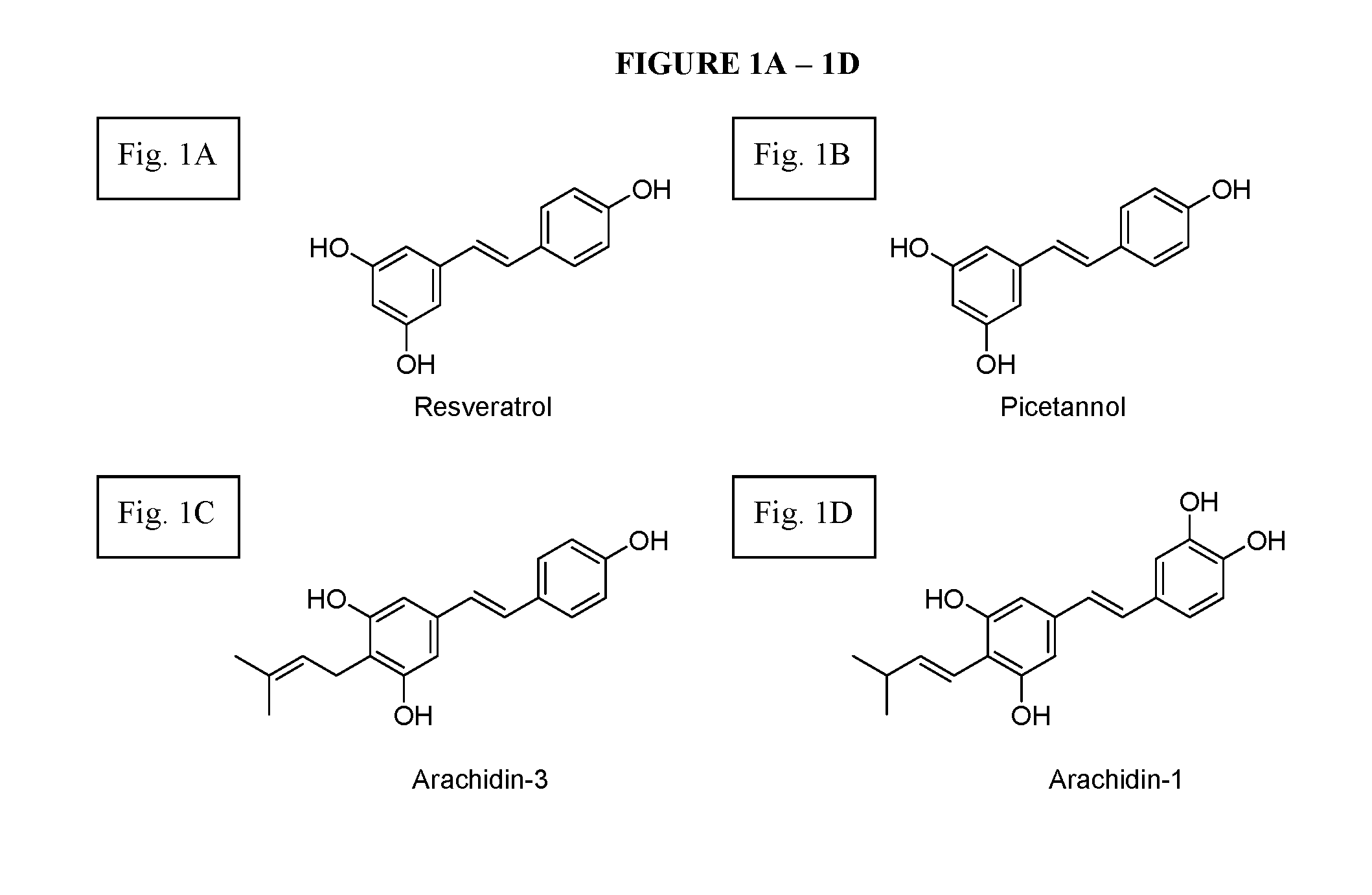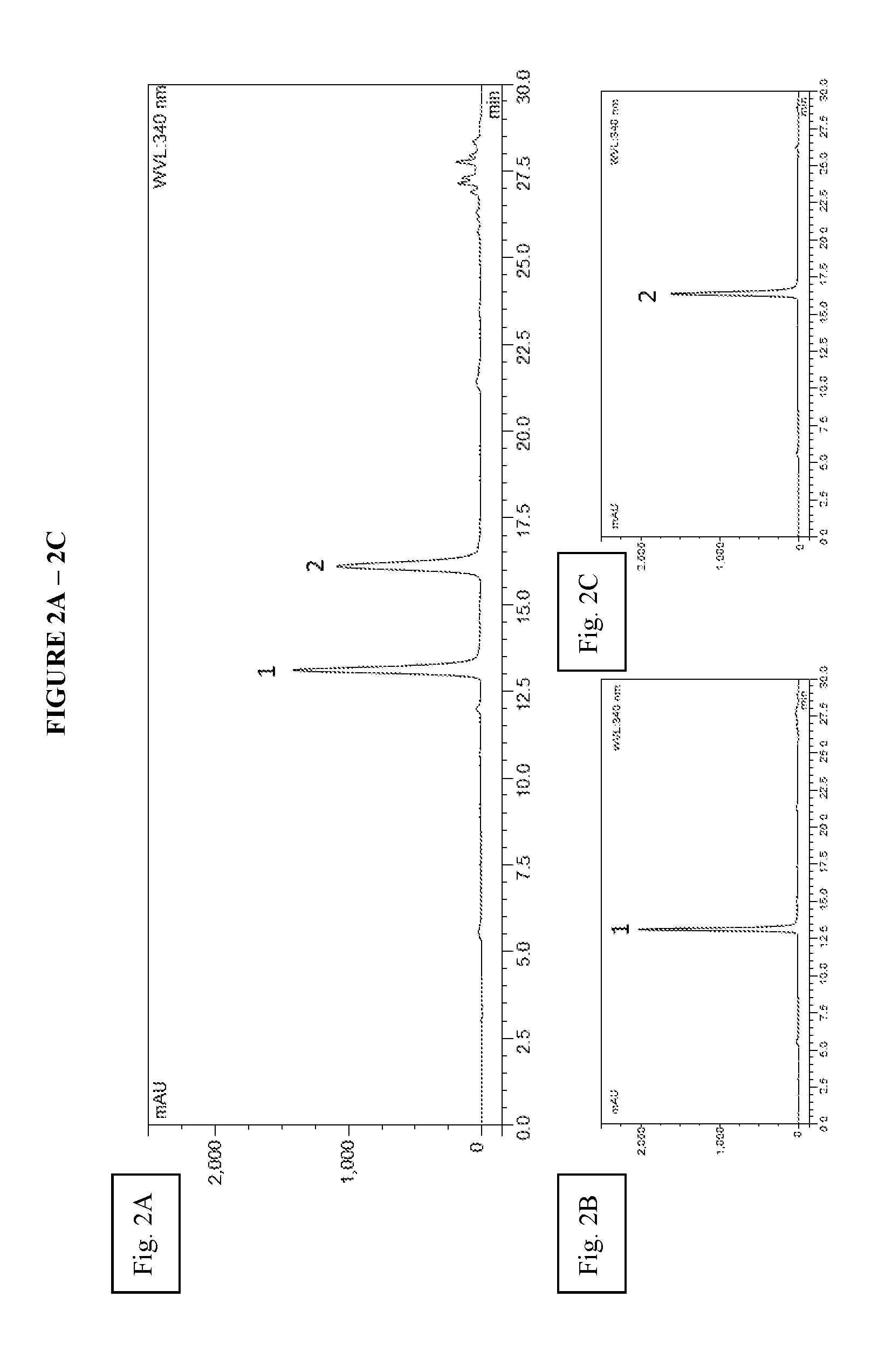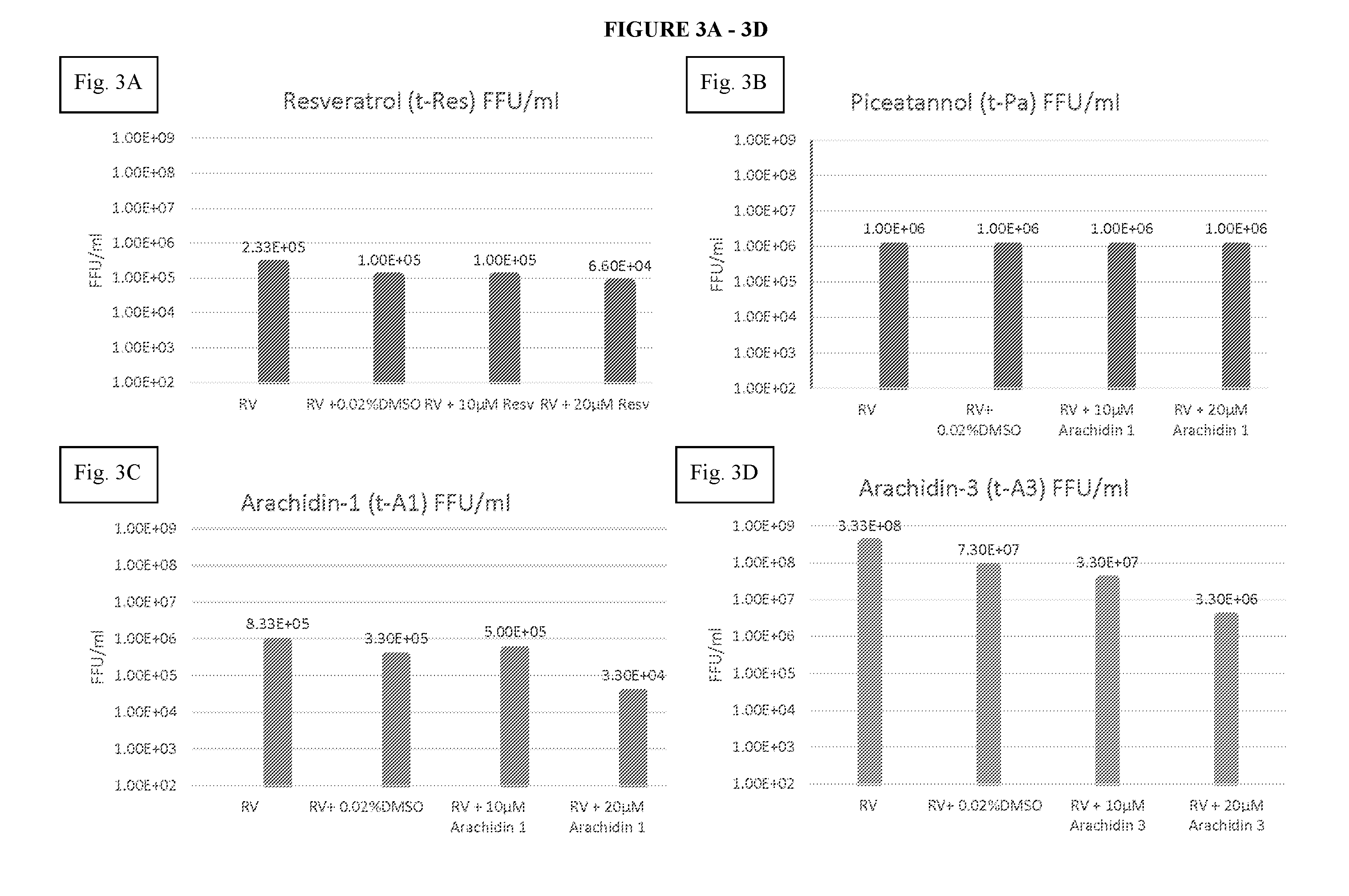Therapeutic Applications Of Prenylated Stilbenoids Against Rotavirus Infections
a technology of rotavirus infection and therapeutic application, which is applied in the field of virus infection treatment, can solve the problems of preventative intervention, inability to tolerate vomiting, dehydration and shock, and the number of deaths associated, and achieve the effect of meliorating one or more symptoms
- Summary
- Abstract
- Description
- Claims
- Application Information
AI Technical Summary
Benefits of technology
Problems solved by technology
Method used
Image
Examples
example i
Cells, Virus, and Reagents
[0058]The objective of the study was to test the effect(s) of four exemplary stilbenoids on RV replication in HT29.F8 cells with variable concentrations of the stilbenoids and different collection times. Based on previous studies that assessed the effect of different amounts of stilbenoids and DMSO on Influenza A and polyomaviruses, respectively [30, 31], 10 μM and 20 concentrations of each stilbenoid were tested at 12 and 24 hours post-infection. A total of five experimental sets were performed per stilbenoid. In the first experimental set, cells were infected with SA114F RV at a multiplicity of infection (MOI) of 2 as previously reported [14]. In the second experimental set, 0.02% DMSO was added to the RV infection to prove that 0.02% DMSO used to solubilize the stilbenoids had no effect on cell viability or production of RV. In the third and fourth experimental sets, 10 μM or 20 μM concentrations of the stilbenoids, respectively, were solublized in 0.02%...
example ii
Bioproduction and Purification of the Stillbenoids
[0059]Hairy roots of peanut cv. Hull (line 3) were cultured in 250 ml flasks containing 50 ml of MSV medium as previously described [1, 32]. At day nine of culture, the spent medium was removed and replaced with fresh MSV medium containing 9 g / L methyl-β-cyclodextrin (Cavasol® W7 M) and incubated in the dark at 28° C. for an additional 72 h to induce synthesis and secretion of stilbenoids into the culture medium. The medium from each flask was pooled and partitioned with ethyl acetate to extract the stilbenoids. The ethyl acetate extract was dried in a rotavapor (Buchi) and t-A1 and t-A3 were purified from the extract by HPCCC as follows. The dried ethyl acetate extract was resuspended in HPCCC solvent system (hexane:ethyl acetate:methanol:water [4:5:3:3]) and injected into a Spectrum™ (Dynamic Extractions) HPCCC system. The upper phase of the solvent system was used as stationary phase and the chromatography was monitored at UV 340 ...
example iii
[0062]MA104 cells were obtained from ATCC (Rockville, Md.) and the HT29.F8 cells, a spontaneously polarizing cell line, were derived from the parent human adenocarcinoma (HT29) intestinal line [12]. The cell lines were confirmed to be free of mycoplasma contamination using the MycoFind mycoplasma PCR kit version 2.0 (Clongen Laboratones, LLC)
[0063]RV SA11 clone 4F [33] was grown and titered in MA104 cells and stored at −80° C.
PUM
| Property | Measurement | Unit |
|---|---|---|
| Fraction | aaaaa | aaaaa |
| Fraction | aaaaa | aaaaa |
| Fraction | aaaaa | aaaaa |
Abstract
Description
Claims
Application Information
 Login to View More
Login to View More - R&D
- Intellectual Property
- Life Sciences
- Materials
- Tech Scout
- Unparalleled Data Quality
- Higher Quality Content
- 60% Fewer Hallucinations
Browse by: Latest US Patents, China's latest patents, Technical Efficacy Thesaurus, Application Domain, Technology Topic, Popular Technical Reports.
© 2025 PatSnap. All rights reserved.Legal|Privacy policy|Modern Slavery Act Transparency Statement|Sitemap|About US| Contact US: help@patsnap.com



